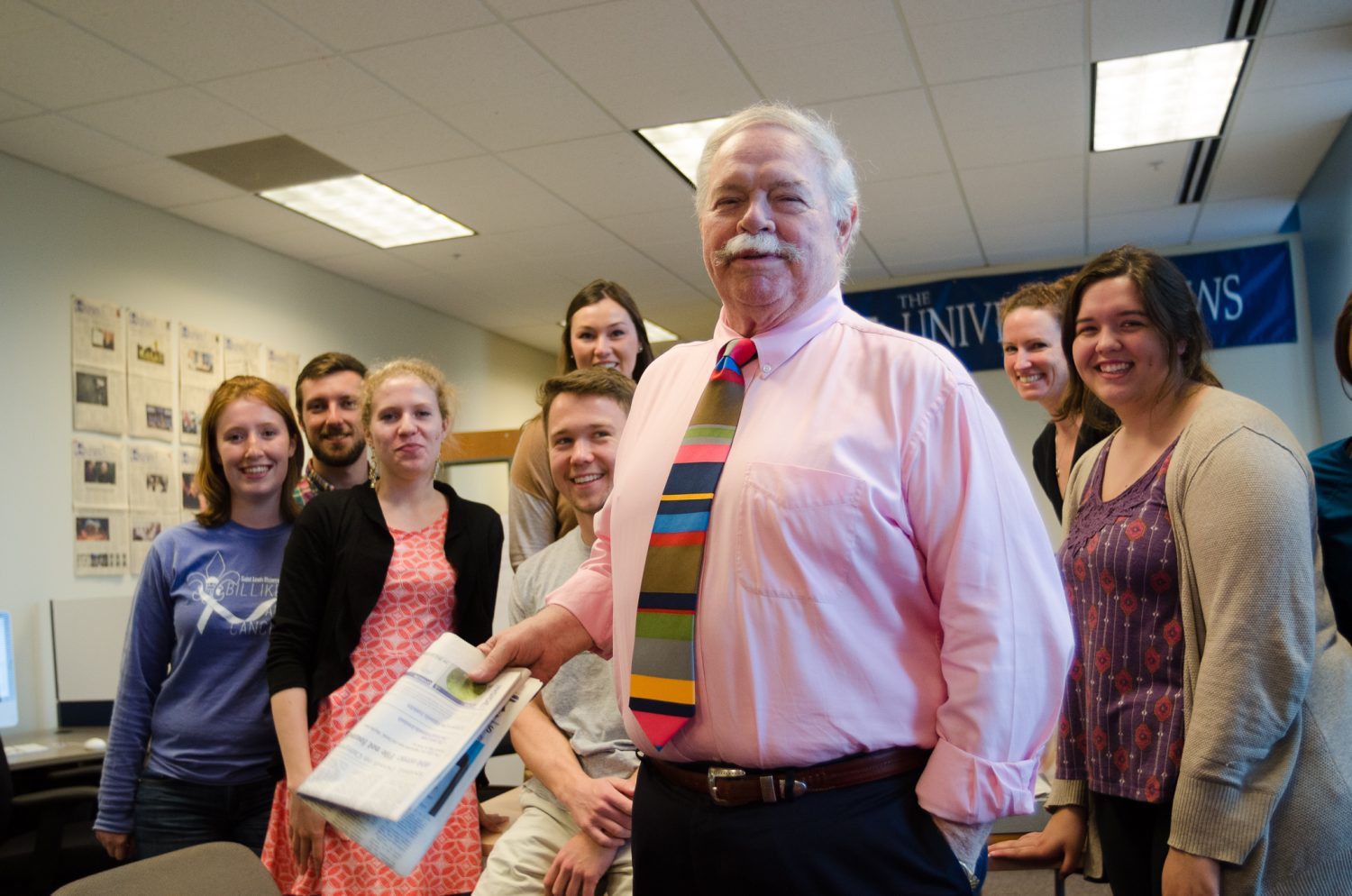The house lights dim and six performers take the stage. Suddenly, the audience sits not in the upholstered seats of the Xavier studio theater but in the uncomfortable, plastic chairs of a high school driver’s education classroom complete with a dated, worn-out film.
In the Pulitzer Prize winning play How I Learned to Drive, playwright Paula Vogel masterfully uses a controlling metaphor of learning to drive in a coming-of-age story about a young girl who learns to drive as she learns the harsh reality of life.
The story unfolds through a series of subsections within the one-act play, which are distinguished by titles that are projected on two screens, the backdrop for the show. The titles, including “A mother’s guide to social drinking” and “On Men, Sex and Women: Part 1” flicker onto the screens as if part of the driver’s-ed instructional film, but this time a young girl learns of the harsh implications of sexual abuse rather than who has the right of way at a four-way stop.
Lil’l Bit (Heather Wood) asks her Uncle Peck (Lee Emery) to teach her to drive. Through a series of flashback and future scenes, Vogel scripts the complex development of the uncle’s relationship with his niece. He treats Lil’l Bit with the kindness that a suitor would court a girl, making it easy to forget that Peck is in fact abusing her and that this is not a story of happily ever after.
As the character of Lil’l Bit asks at the play’s ending with a quivering voice, “How do I defend myself if I’m holding onto the steering wheel?” It’s hard to keep your eyes open to see Peck’s arms caressing her. Yes, it happens, and Yes, it’s disturbing. That was Vogel’s point.
However this is not a two-man show, but a six-man show. The other four members of the cast (Magan Wiles, Ryan Fenwick, Erin Markey and Shannon Sanazaro) make up the Greek Chorus. They portray the additional characters of: Lil’l Bit’s mother, grandmother, grandfather and Peck’s wife, as well as enhancing the scenes with expressions and various poses.
However, it takes more than a well-written script for a play to be successful. Actors have lines to deliver; scenes have to be staged; sets have to be constructed. Only then will performer cease to be the guy who sits in the back of your English class or the girl who you saw eating a tuna sandwich last Wednesday.
The project is ambitious-at times overwhelming-but by no means impossible. It is a project that some might even argue should be left to the professionals. Director Heidi Waltz and the rest of the cast and crew disagreed. After viewing the Saint Louis University Theater’s performance of Vogel’s play, it seems that ambitious projects should be left to the students.
Aside from the publicity, students were behind the show a 100 percent. No one whispered, “it’s-a-student-run-performance” to excuse mistakes or mishaps of the performance-because there weren’t any. For this, the students should be commended and invited back to do another show.
This isn’t to say, however, that professionals of the acting world don’t produce quality work; but perhaps students-due to their age and newness to the `biz’ are more closely tied to their of love the theater. They live and breathe the stage, and it shows.
Apparently, all it takes is one act, six actors and a studio theater to deliver a powerful message. That, and a few students.





